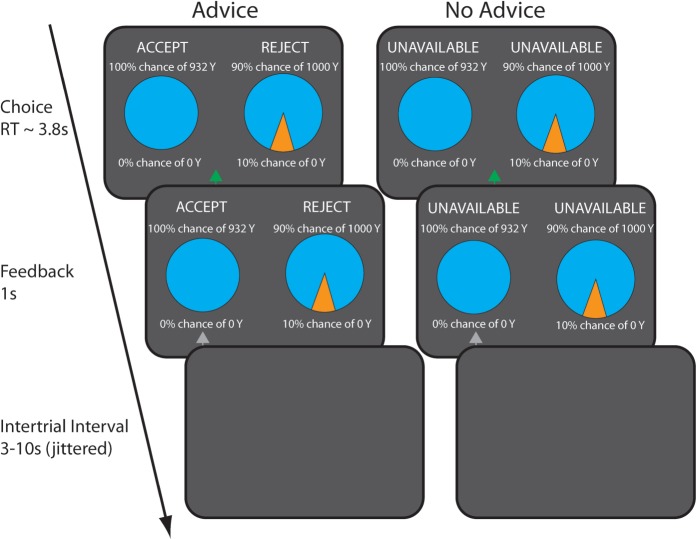Fig. 1.
Task schematic and timing of fMRI design. On each trial, participants were asked to choose between a sure win and a lottery, either in the presence of advice from an expert (ADVICE) or in its absence (NO ADVICE). Risk-averse advice from the expert economist was provided on half the trials by way of placing the words ‘ACCEPT’ above the option that the expert would choose and ‘REJECT’ above the option that the expert would not choose. In the NO ADVICE condition, the expert’s advice was hidden by placing the words ‘UNAVAILABLE’ above both options. The probability of the lottery varied across seven probability conditions ranging from 1% to 99% and the amount of the sure win varied based on decision weights estimated in a behavioral pre-scanning session using the PEST procedure. The self-paced decision period was followed by a 1 s feedback period, which provided confirmatory information about which option was chosen by the participant. Finally, a jittered and optimized intertrial interval that varied between 3 and 10 s was presented.

